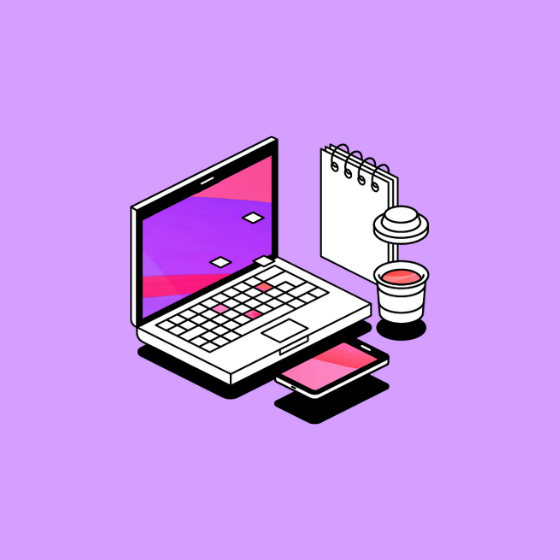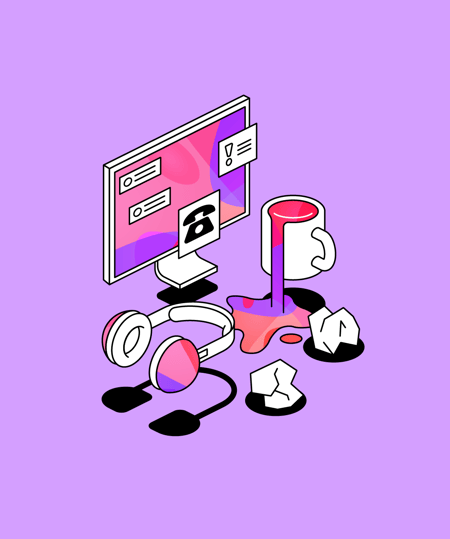How to boost your learning at college by taking notes effectively.
Poor note-taking can be a major obstacle to academic success. Let's explore how you can transform your learning experience with these simple tips.
 4 min read
4 min read
 Published: 4 Oct 2024
Published: 4 Oct 2024
 Danniela Duran
Danniela Duran

Imagine finishing a 90-minute history lecture packed with battles, names, and dates. You recorded it and took basic notes, but you know you missed details.
Later, you revisit the recording, using time stamps to jump to key parts or adjusting playback speed. You slow down to listen carefully, enhancing your notes with finer points.
In under an hour, you've transformed a challenging lecture into a clear, organized study resource. Happy days!
We've all been there. You arrive at class eager to learn, ready to absorb your professor's knowledge.
But the professor races through a complex topic, cramming what feels like a week's worth into 50 minutes.
You try to focus and note the main points, but leave feeling like you missed something.
The next day, you're determined to capture every word, becoming the Transcribe Master 3000. Your notebook looks fuller, but you've missed the forest for the trees.
On day three, armed with YouTube wisdom on effective note-taking, you aim to listen AND jot down key points.
But what's a key point? Are you writing too much or too little? You're distracted by last night's video advice, and suddenly class is over.
Come exam time, your incomplete notes leave you feeling unprepared and overwhelmed. There are so many gaps, and to catch up, you’ll have to find your own way to fill them. There has to be a better way for you to keep up in class and get better notes for studying, but how?
Spoiler alert: this is where recording your lectures, combined with digital note taking proves invaluable, offering more flexibility and control over how you capture, organize, and revisit information.
Benefits of recording lectures and digital note taking vs. traditional methods
Audio recording in class allows you to focus on understanding the lecture in the moment instead of scrambling to write everything down.
With a recording, you're not just relying on your memory or hastily written notes—you've got the entire lecture available for playback. This can make a big difference, especially in subjects that require deep concentration or where the professor speaks quickly.
Wait! But will audio recording the lectures not be very time-consuming? Wouldn’t it be like sitting in class twice? Nobody has time for that!
Once you integrate audio recordings and digital note-taking, you can experience a tangible shift in your academic life, including time efficiency.
Here are some of the main benefits:
- Efficient studying: Audio recordings allow you to skip unnecessary parts and focus on difficult sections. You can review time-stamped highlights or adjust the playback speed to match your desired pace. This makes study sessions faster and more effective, resulting in shorter but more productive ones.
- Organized and accessible notes: With digital notes, everything is searchable and neatly categorized. You can pull notes in seconds, whether at home or waiting for a coffee between classes.
- Integration with media: You can add slides, diagrams, links, or images directly into your notes, adding context and resources in real time. This makes studying later much more comprehensive and interactive.
- Reduced anxiety: Knowing you won’t miss a thing, you can feel more at ease before exams. No more second-guessing if your notes are complete—there’s confidence in having everything at your fingertips.
- Improved performance: Better notes lead to better understanding and, ultimately, better grades. You can feel a sense of pride when seeing the tangible results of improved study habits.
- Convenience: you can have your notes in the same place, even on your phone. Having your learning in the palm of your hand has a new meaning.
While traditional methods can still work in many situations and can complement digital note taking, over time, incomplete notes and inefficient studying directly impact grades, leading to feelings of failure or inadequacy.
Digital tools provide more flexibility and help you keep track of key details that might otherwise slip through the cracks.
How to overcome common challenges when recording in class
The process can feel a bit intimidating for students new to recording lectures. You may worry about bothering others or unsure how to get started. These concerns are normal, but they're easy to address:
- Ask for permission: Most professors are receptive to audio recordings, but checking with them before class starts is a good idea. This not only clears up any concerns but also ensures you're following class policies.
- Get comfortable with your tech: Whether using a smartphone, tablet, or laptop, make sure you know how to record and pause efficiently. Test the sound quality beforehand so you know it will pick up the professor's voice clearly. Some use USB microphones and audio-clearing filters to improve quality.
- Take brief notes: Even though you have the recording, jotting down key points or ideas during the lecture is still helpful. This keeps you engaged and helps you stay focused rather than relying solely on listening to the recording later.
- Mark time stamps: Time-stamp key details to quickly find and review important lecture parts.
Remember, recordings are a tool to enhance your learning, not replace your engagement in the lecture. Use them wisely to fill in gaps and review complex material.
How to study from class recording and digital notes
To get the most out of lecture recordings and digital notes, it's important to create a routine that incorporates both. Here's a practical way to do it:
After a lecture, use the recording and your digital notes to build a comprehensive study guide:
- Review your notes right after class: Review what you wrote and highlight any areas of importance or where you missed something.
- Use time stamps for targeted review: Instead of listening to the entire lecture, jump straight to the parts needing extra clarification. Time stamps can make this quick and easy.
- Adjust playback speed: Speed up the audio if you're reviewing material you already understand. If you're working through a tough section, slow it down to absorb the details.
- Enhance your notes: While listening to the recording, add any additional information you missed or didn't have time to write down in class. This helps reinforce your understanding and builds a complete set of study notes.
- Pro tip: With Glean, you can use Quiz Me to create quizzes and identify gaps faster, and the Outline feature will help you create the main structure of your class notes.
More from Better Learning
View All
 2 min read
2 min read
3 student-proven time management techniques that work
From navigating demanding college schedules to excelling in the professional sphere, time management is a vital skill. Glean's student ambassador, Sherrie Zhao, shares her first-hand experiences and proven techniques for mastering this essential skill, offering valuable insights for students and professionals alike.

 5 min read
5 min read
How Glean helps first generation students overcome challenges
Being the first in your family to step onto a university campus is a triumph. But beneath the pride lies a unique landscape of pressures and uncharted territories. This blog explores the hurdles first gen students encounter and how Glean provides the support needed to unlock their full potential.

 2 min read
2 min read
Master class notes with text formatting
Your note taking just got an upgrade! We’re thrilled to announce that text formatting features are now live in your app. Let's take a look at how you can use text formatting to make the most of your notes.





